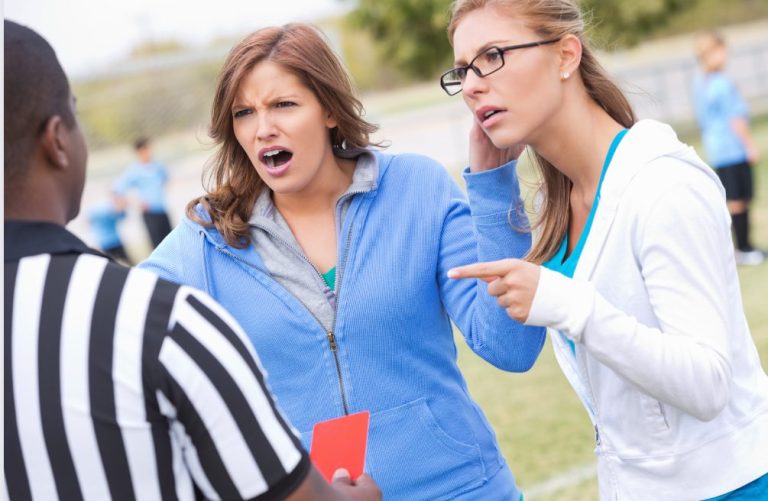Teenagers spend quite a lot of time home alone, after school, holidays, into the evenings and also sometimes overnight while parents are at work, away or even just out?
My hope is that families at least would always be together when disaster strikes. But there’s a high chance that because of this naturally increasing frequency of Teenagers being home-alone as they mature, your teen may experience earthquakes on their own (or with siblings); without you being there to protect, lead or help them.
Civil Defence provide many valuable resources and we prepare ourselves by talking with kids about what to do in terms of drop, cover, hold which is the first crucial steps…
… but do we really talk through with Teenagers the possibility they may need to ‘fend for themselves’ and ‘manage the aftermath’ alone after a significant crisis? The earthquakes or tsunami threats, like we’ve gone through recently, being a good case in point.
You could be out of town, or simply work some distance away which could lead to them being on their own overnight, or for a couple of days if you’re having to walk your way to them.
Take some time to think about what you should prepare your Teens for… What unique circumstances do you have in your home?
Preparing home alone Teens for a crisis
Figure out what’s best for your Teen in terms of the discussion. Is it best to go through everything all at once, or spread the information load over time.
Go over it again in a few weeks/months to see what has stuck. It’s easy to assume they know… but test them out and see, do they really know where things are, can they really work it out?
Do they know where it is/or exactly what to do
- Emergency Kits
Where are they exactly in the house, or where is the key to access the shed? Go through the contents in them, for how things are used and what they are for.
- Medical Kits and medications
Where exactly are they, if they are stored separately. Again go through what the items are and how they can be used, have a play with the bandages and key usages etc…
- Water
Where is it stored? It might be simple if it’s in bottles in the back of the cupboard, but maybe you have an outside rainwater collection tank that needs demonstrating or another unique way of storage.
- Water other sources
Demonstrate, and then get them to show you other ways, how to collect water that might be available at your place. Show them how to use Water Purification tablets.
- Turn OFF things that were ON inside
eg. Oven or heaters for when the power comes on later if you’re not there, that would be unsafe.
- Boil water
Practise with them exactly how to boil water without power, plugging in a jug is one thing, but without power it’s good to practise connecting the gas bottle to the BBQ and starting it safely (and turning it off again). Or, how to change the canister in the emergency/camping gas cooker and the importance of not using these items inside.
- Cooking
Talk through and practise what other options you have to cook without power, maybe you have a fireplace you can cook with a frypan on the top. Practise using the BBQ and Gas Cooker to make the sort of meals you’d be making from your emergency kit.
- Analogue phone
If you have one, is your Teen clear which one in the house is analogue and will still work, or where the old one is stored in your Emergency kit to plug it in, and where do you plug it in to?
- Neighbours
Do they know which ones they’re encouraged to connect with after a disaster. We live in an apartment and know our fellow dwellers a little, but by no means well. But there are a few key ones that my Teen could gravitate to if they were also home.
- Radio
We rely on digital radios playing off our electronic devices normally, but does your Teen know how to tune and work an analogue radio and what stations to tune into if devices aren’t working or are lost?
- Pets
Talk through with your Teen what needs to be done with your pets and the best practice for your situation. Also, as tough as it might be, talk through what escalated scenario’s ‘might’ mean having to leave them at home while your Teen evacuates (hopefully not).
- Conserve your battery life
Teens have to use the battery saving feature on their cell phones sometimes, and now may be another good time to exercise this. Talk through avoiding playing music or aimlessly surfing social media after you’ve checked in with your loved ones; especially if there isn’t a guaranteed power supply to charge up.
- Listen out for alerts
From Police, emergency services, tsunami warning sirens and loud speakers on vehicles advising you to take action and possibly evacuate the area. Be mindful of this and think about that before using headphones where you might not hear. Do they know what the tsunami siren sounds like?
- Seek information
Do your Teens know that Civil Defence, local Councils and your local region are very good at updating the public these days through the power of the internet and radio. If they have access, show them how to find and check Twitter feeds, Facebook and websites for live updates. Info from friends is helpful, but know how to check it yourself and where to find it.
Talk through scenarios where they may need to know/do the following
- Inside water valve
Where is it and how to turn off, in case of internal plumbing leak.
- Outside water toby
Where is it, if it gets buried under dirt/grass and how many paces it is from that tree etc… and how to turn it off, in case of extensive flooding in the house.
- Gas
Where the shut off valve is and how to turn off, in case of gas leaks or broken pipes.
- Electricity
Where the Mains switch is and how to turn it off, in case of electrical issues
Evacuating the house, area or suburb
- Grab n Go bags
Where is it exactly, what’s in it and to try if possible to take it with them.
- List stuck on fridge of what else to grab, if time
If there is enough time, what else to grab of your everyday items eg. cellphone, keys, eftpos card, ID or whatever you consider important ahead of time.
- Evacuation meeting places
Where EXACTLY they are and how to get there. Meaning if you get separated while evacuating or are a parent trying to come back from work and meet them, you know where to head towards.
We have multiple meeting places based on degree of the severity of the Earthquakes. eg. Strong earthquakes = meet outside on the street, Buildings’ crumbling/falling/possible Tsunami Risk = past the end of the street to the open area by the mechanics (higher ground), Tsunami coming = head further up hill to our friend’s house as the meeting point (even if they’re not home). Do they know about the Blue lines?
- Walk the evacuation routes
Walk the exact routes to the meeting places, also take some alternative routes as options to get through if that route is blocked, drive the route, repeat in a few weeks’ time and make them lead the way.
- Rhymes for street names
To get to our friend’s house, there are multiple street turns to remember, so my Teen made a rhyme to remember it easily, (oddly featuring Seth Rogen ;-), but hey, she remembers!
- Civil Defence centres/Community emergency hubs
Do they know where the closest one to your house is and an alternative one in case that’s closed. Talk through what happens there and that help will be available. Walk the route.
You can find the hub closest to you on the Civil Defence website here.
- Leaving Evacuation notes
If time and safe to do so before evacuating, talk with them about writing details on paper, (or on the door, or wall, or carpet with anything they can find, if need be), stating basic facts: Time, Your Name, is/isn’t Ok, They’re with your friend/siblings/neighbours Name, Walking to your meeting place/friends, etc…
- Securing the house
If time and safety allows, remind them to do their best to secure the house, shutting windows, securing doors and turning off the oven, heaters, etc… and anything else unique to your home.
Communication
Talk through with your Teen all the possible other ways to connect with each other if, say calling isn’t connecting or texting isn’t working:
- Viber, Whats app, Skype etc… can sometimes work if the wifi is still working, but texting isn’t working.
- Facetime through iMessage, sometimes still works when phones calls won’t connect.
- Social Media, post saying I’m safe etc… write on Facebook, Twitter, create an Instagram note pic, snapchat it, etc…
- Click the ‘I’m Safe’ on Facebook’s Safety Check they activate in emergencies.
- Got hold of the friends, but not the parents? Ask friends to spread the word you’re ok, ask them also to post to Social Media if they can.
- Practise each other’s phone numbers, sounds simple, but I realised just last week that I hadn’t learnt my daughter’s new cell phone number off by heart, I’ve been practising it ever since!
Plans
Discuss as a family and settle on different ‘best case’ scenarios for if your Teens are home alone, from mild through to major. Maybe, it’s best to stay put, or it might be best to head to the neighbours – talk through your unique situations.
Are you isolated, rural, live on an island, what’s your plan?
I remind my Teen that I’ll be doing everything I possibly can to get my way to her from wherever I am. Even if it means I’m walking, and it might take me quite a significant period of time to get through, maybe even a day or two. Make sure your ‘best case’ scenario plans account for this.
Grab n Go bags
Civil Defence does a great job of providing resources, and has clear information on their website for things to include in your Grab n Go kit.
We’ve extended our Teen’s Grab n Go bag beyond the basic kit, with some extra things and we have one for each of us:
- House and car key
- Spare phone charger
- Spare throw away cellphone and charger, with phone numbers pre-loaded
- Printed phone list – cellphones, landlines and work numbers for our nearest and dearest
- Passport
- ID card
- Cash
- Pocketknife
- Whistle
- Matches/flint
- Duct tape
- Hi viz vest
- Wind up Torch/Radio/Siren/USB Charger
- Emergency blanket
- Rain poncho
- Hair ties!
- Clipped to the backpack, a flashing light (for finding each other in the dark from a distance)
- Water purification tablets
- Teen’s own medication, also ibuprofen
- Notebook, pen, permanent marker
- Photocopy of Driver Licence, Passport and school ID, all in a ziplock bag
NB: Ziplock bags are your friends, use them for nearly everything!
Basic Grab n Go bag items
Thermal top, thermal bottoms, pants, warm top, rain jacket, shoes, socks, basic first aid, warm hat, sunhat, dust mask, snacks, water, torch, soap/hand sanitiser.
Checklist
To help your Teen work through what could be a stressful time, put these types of things above on a checklist, say on the fridge, or beside where the Emergency Kits or Grab n Go kits are stored.
Having tasks they can get on to, to help themselves, is a good way to focus their mind and gain momentum toward managing themselves through the crisis.
At the top of my checklist, I have:
- Are you ok?
- Stay aware
- Take a moment to breath, clear your head, then take action
- Your safety is most important, even if all the below doesn’t happen, keep yourself safe, I will see you as soon as I can
What unique circumstances do you have at your house that you have/need to teach your Teen? What parts were the hardest to talk through with your Teen? What did you take for granted that your Teen knew how to do, but actually didn’t?
NB: Civil Defence is your best form of knowledge and resources in getting prepared and getting thru. This article is simply written to support their information further by preparing Teenagers to manage without you, but is not designed to take away from Civil Defence’s expert knowledge.





